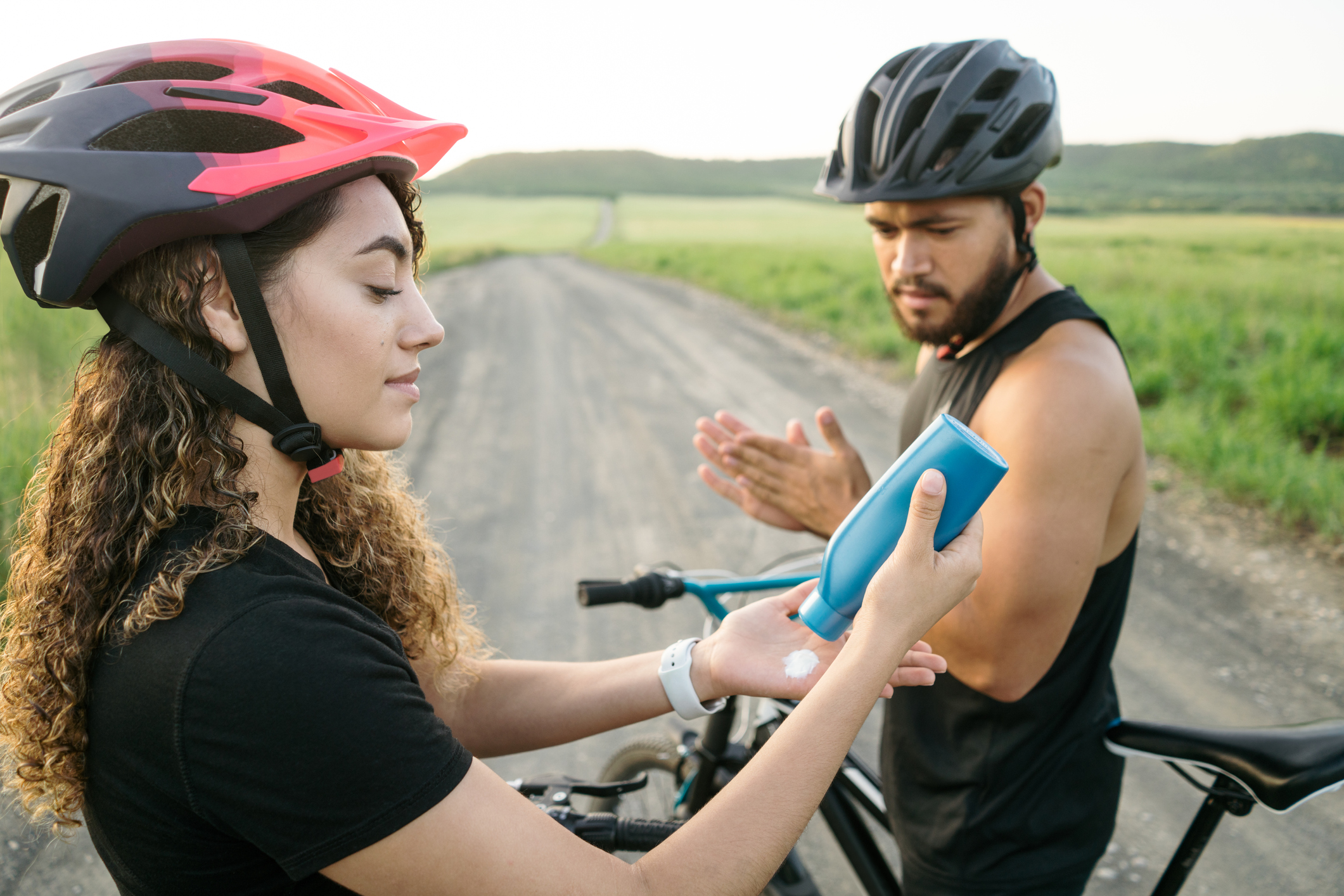
Published August 2023
During the hot summer days, we’re naturally spending more time outdoors. Whether you’re barbecuing, sending the kids off to camp or going for a swim, the sunny skies can feel rejuvenating. However, too much sun exposure — especially unprotected — can cause more harm than good.
The sun’s UV rays are strongest in the summer. And since many of us may spend this time at the pool, beach or lake, it’s important to know that these rays reflect off water and sand. Prolonged exposure to the sun’s UV rays can lead to an array of problems, including various forms of skin cancer.
Here we’ll share preventive tips for skin care to protect yourself and loved ones from the sun’s harmful rays and keep everyone’s skin safe this summer:
Learn More >> Find a Health Care Provider

Know your sunscreen etiquette
Dermatologists recommend using a sunscreen with an SPF of at least 30, which blocks 97% of the sun’s UVB rays — rays with a shorter wavelength associated with skin burning. A higher-number SPF (sun protection factor) doesn’t mean you can spend additional time outside without reapplication. Higher-number SPFs simple block slightly more of the sun’s UVB rays, but no sunscreen can block 100%.
Sunscreen should be reapplied every two hours when outdoors, especially after swimming or sweating. And cloudy days need sunscreen too. In fact, while we tend to think of sunscreen as a summer-exclusive essential, dermatologists actually recommend wearing sunscreen every day that you’re outside.

Remember, clothing counts
In addition to sunscreen, the right clothing can also play a critical role when it comes to protecting your skin from sun damage. UPF (ultraviolet protection factor) is an umbrella term for UVA and UVB protection. According to the Skin Cancer Foundation, UPF is different from SPF in that UPF measures the amount of UV radiation that can go through the fabric, whereas SPF is based on the amount of time it takes for UV-exposed skin to burn. UPF clothing can help protect the areas we don’t normally apply sunscreen to, therefore decreasing your risk of exposure to harmful rays.
In addition to wearing UPF-approved clothing, you can also improve your sun protection by considering the following factors when selecting your attire:
- Dark or bright colors absorb UV rays the best, reducing the penetration of UV light.
- Denser fabric, like denim, canvas and wool, are more protective than thin, woven cloth.
- Choose loose-fitting, high-coverage pieces of clothing versus tight clothing which can reduce the level of protection offered.
- Aim for fabric compositions like unbleached cotton, shiny synthetic fibers and high-tech activewear.

Monitor changes to moles and birthmarks
Certain atypical marks on the body can be potential signs of skin cancer, and factors like fair skin, frequent sun exposure and family history can put you at higher risk. There are three common types of skin cancer — basal cell, squamous cell and melanoma. Basal cell and squamous cell cancers rarely spread to other parts of the body and are usually curable. Melanoma is the more serious type of the three. It’s less common, but more likely to spread. UV ray exposure increases the risk of developing all three, but checking your skin for changes can help detect skin cancer at its earliest stages and give the best chance for successful treatment. Here are some of the most common skin changes to look for:
- New, expanding or changing growth, spot or bump on the skin
- Rough or scaly red patch, which might crust or bleed
- Mole (or other spot on the skin) that’s new or changing in size, shape or color
- Mole with an odd shape, irregular borders or areas of different colors
If you notice any changes to your skin, connect with your health care provider. If you’re high-risk you should also have routine screenings with your primary care physician or dermatologist.
Learn More >> Log into the Member Portal for Resources and Support
When it comes to summer skin care, prevention goes a long way. Sunscreen, protective clothing and monitoring any changes on your skin are simple ways to enjoy the sunshine while keeping your skin healthy.
To confirm eligibility for any programs or services mentioned in this article as it relates to your specific health plan, please reach out to your account executive or HR benefits team. You may also speak to our member services team at (888)-333-4742 or by sending a secure email. And for plan details and other member resources, log in to the member portal.


